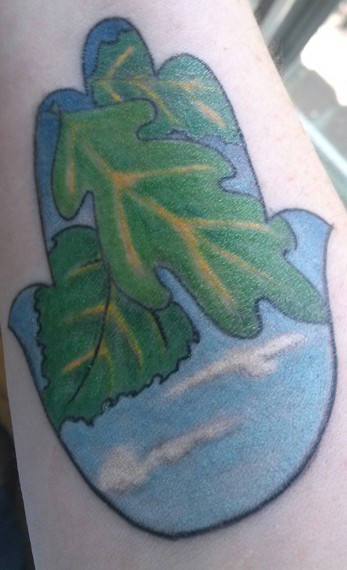Calendars rustle about. Soon, it will be a year since Uncle Jerry died. Meanwhile, Father's Day approaches. I wrote this piece last year, on the Summer Solstice, about a month after my favorite Green Man joined the trees. And, now, it's nearly five years since the flood of 2011. More rustling calendars.
-----
Good Morning, 6.20.15
I'm already smiling as I awaken the morning of the Owego Strawberry Festival to a favorite sound of the mellifluous, passing train accompanied by birds singing as actively as they could be, and it occurs to me that the festival is like Chanukah, in June.
Not because of the food which is, after all, largely fried and often made of potatoes (strawberries nevertheless remaining the main fare's primary ingredient, yes, sure), and not because of the materialism and opportunities to buy all manner of truly silly things that now seem to be the same at every street fair.
Rather, it is, I realize, because of the relationships, the bright feeling of communitas that is not merely clichéd, borne out of nostalgia, or imaginary. After all, the Village of Owego, like so many other little Susquehanna River towns, has survived numerous floods, most recently not quite four years ago.
Like those negotiating life in the aftermath of a social conflict not of their own making, but to which folks are compelled by circumstance and location as well as by ethics to bear witness, people are famously bound together in many cases even regardless of politics during and in the aftermath of a devastating flood.
The experience of the September 2011 flood indeed further glued but didn't adhere me to the tiniest of any town in which I've lived. I met, conversed, and ate meals in the streets with people who, like me, had no power, no water, no heat, and no assurances that they could return home easily or safely. We watched the National Guard manage our spaces and, at times, our interactions. We had a curfew that not everyone honored and were considered to have been under Martial Law.
Maybe that's at least partly why, yesterday evening, meandering with friends at the Antique Mall as the Festival geared up, I was drawn so strongly to World War I binoculars near their fragile leather case, used by a Merchant Marine, and labeled as such, with "Paris" also appearing on both eyepieces.
How oddly blessed I felt and in fact nearly cried when I realized that the binoculars were crafted to help one survive by watching in the midst of violence and struggle, a few years after which my beloved Uncle Jerry, who just died, was born.
The fraying binoculars remind me, a pacifist, that the soldier whose sweat accumulated on them in an unfathomable, dirty world might have been doing his best, not so sure about killing or even defending. I imagine him not using them to track down those labeled as enemies, but to protect his comrades and himself in an untenable situation.
My Uncle Jerry, one of the greatest of peace activists, was drafted and served in World War II. He famously told us of missing the Battle of the Bulge because he was sick that morning. Thanks be to the secular gods and goddesses and all of the Green Men that he didn't have to go.
Jerry lived to recite James Agee's "Knoxville 1915," from A Death in the Family, a title whose irony now is not lost on me. A Child's Christmas in Wales by Dylan Thomas, practically everything A. A. Milne and Dr. Seuss ever wrote, and "The Love Song of J. Alfred Prufrock" by T. S. Eliot were all key figurations in his incredible repertoire.
Listening to the birds that I could see and maybe even hear more clearly with my new, 100 year old binoculars whose lenses I cleaned and case I dusted with such care last night, I understand this morning, perhaps for the first time, that Jerry orated mostly about the sorts of things that this Festival evokes in me and I think stirs for so many others -- families gathered on lawns and in backyards; affectionate, complicated alliances, both longstanding and emergent; meter and rhythm at the best moments of cleverness and silliness; reunion; spontaneous, celebratory conversations; life affirmed and death imagined in soliloquy and publicly -- and I know that he has given me yet another present.
Thank you. I'm paying attention. Quiet.
Last day of spring. Summer Solstice, tomorrow.
The patterns of Fireworks, people meandering through and as the crowd, funnel cake, ribbon fries, temporary shop fronts folded and unfolded.
And the strawberries. All forms of the fruit. Sweet and tart. Like what happens on the streets.
Good morning.

Image of chamsa tattoo on author's right inner forearm, beginning on 6.20.15, in loving remembrance of Uncle Jerry. A Druidic white oak leaf is embraced by two paper birch leaves; in the background, a daytime sky with clouds at the base of the hand darkens to a night-time sky at the fingertips. The chamsa oftentimes represents the Shekhina or feminine face of God in Jewish mystical traditions. Diane's chamsa is decidedly pantheist. Photo taken by the author. Tattoo by Mary at Owego Tattoo Company.